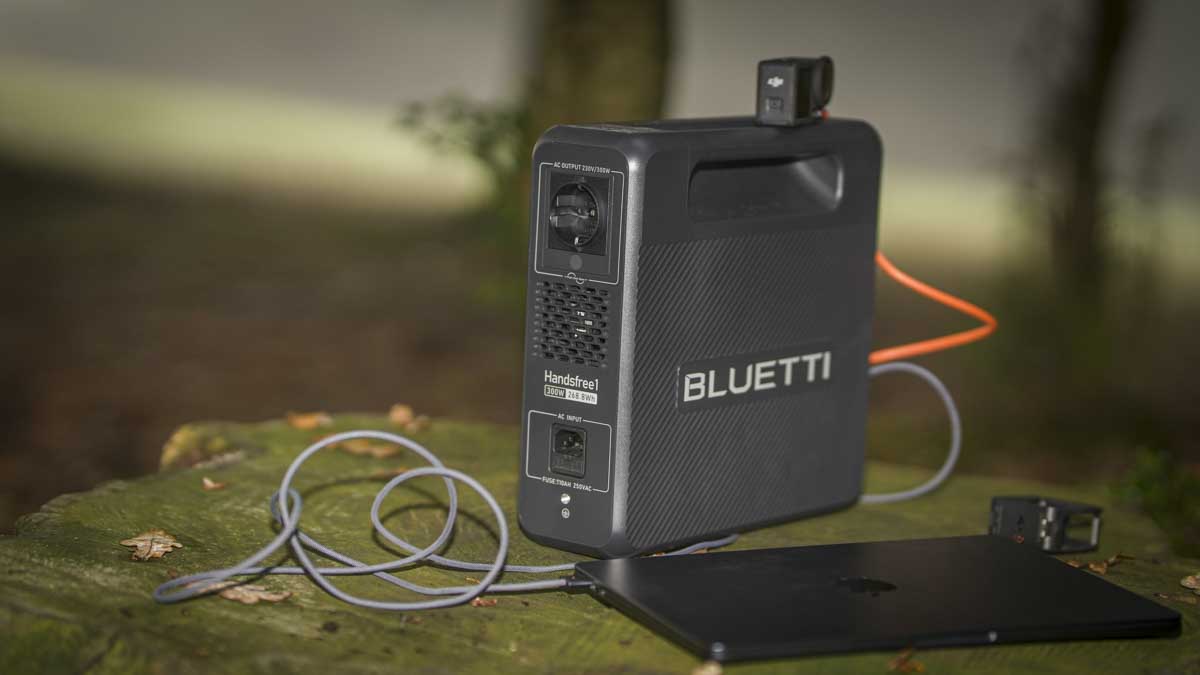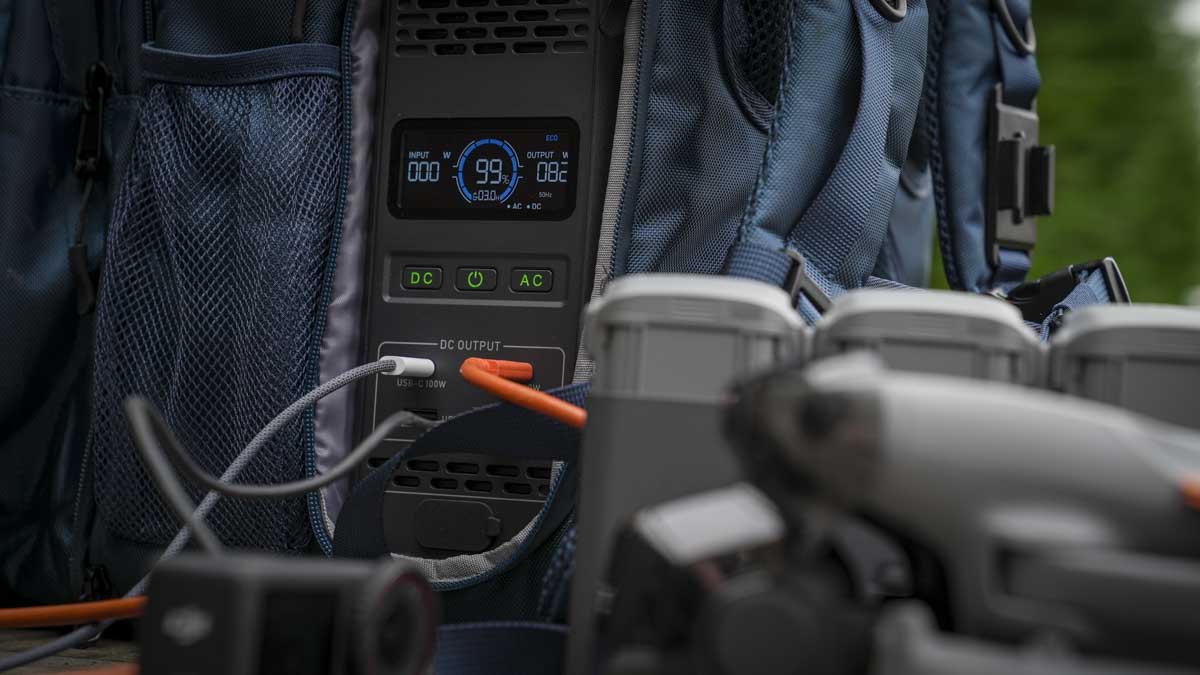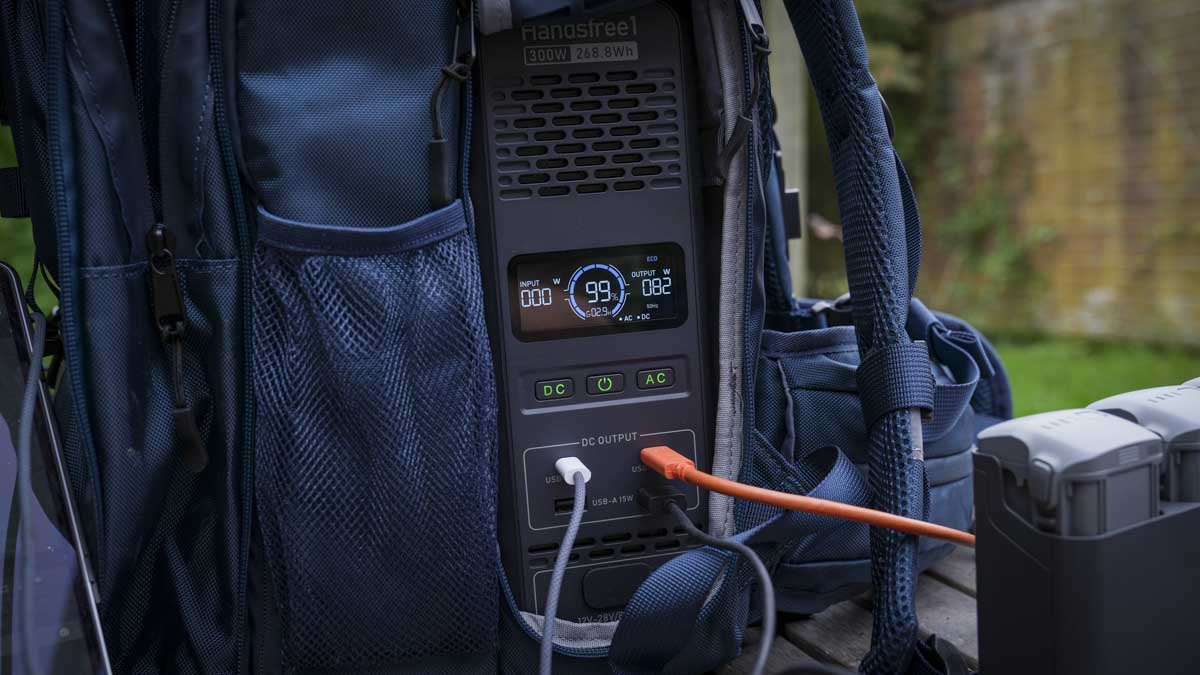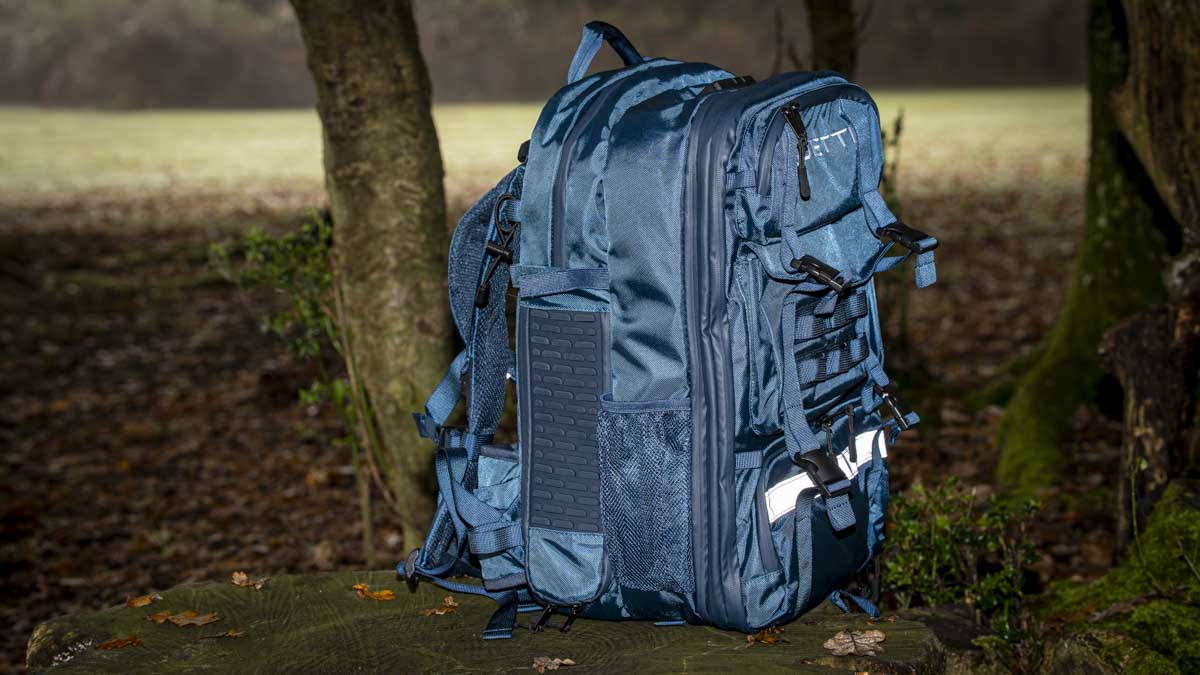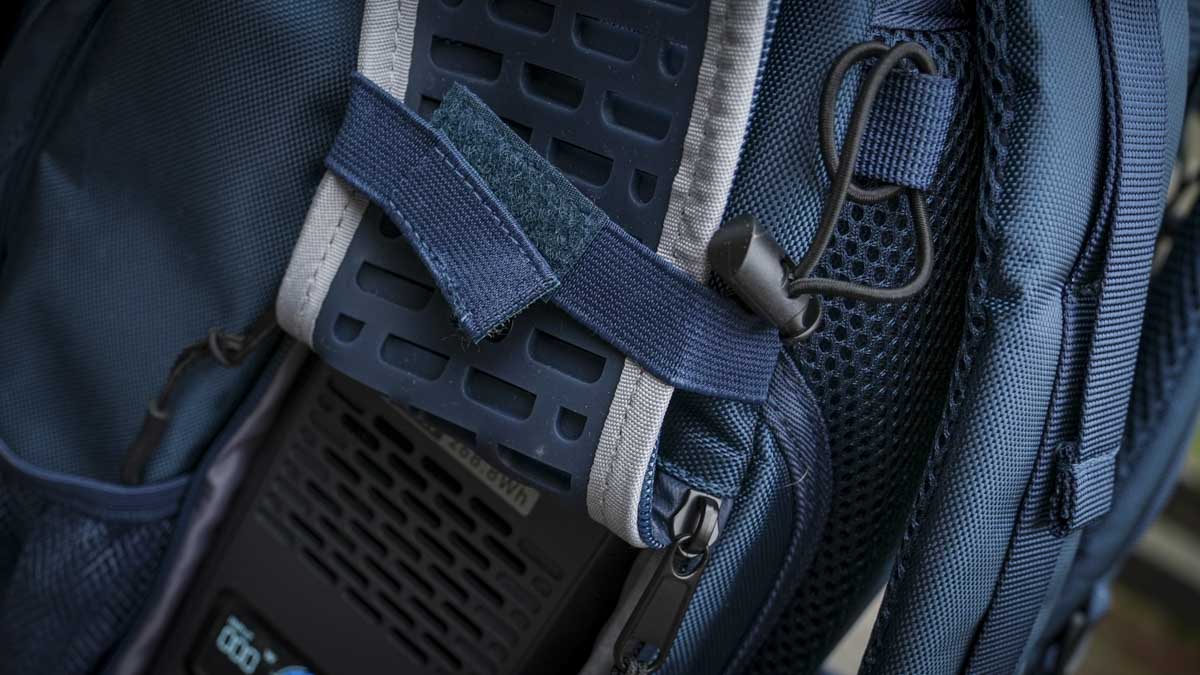The BLUETTI Handsfree 1 is something of a surprise but really reinforces just how useful these electric power stations are when working as a photographer or videographer. I now always take at least one of these systems with me on a shoot. Sometimes, they get dragged along for the day, but more often than not, they get left at a base where they’re used to charge batteries and power computers.
The fact that I now have the option to carry one with me does add an extra dimension to the day. However, I have power banks that command a decent capacity yet are far smaller, so at the start of this test, my initial thoughts were: this is a great idea, but why would I take the BLUETTI Handsfree 1 over a far smaller and lighter source of power?
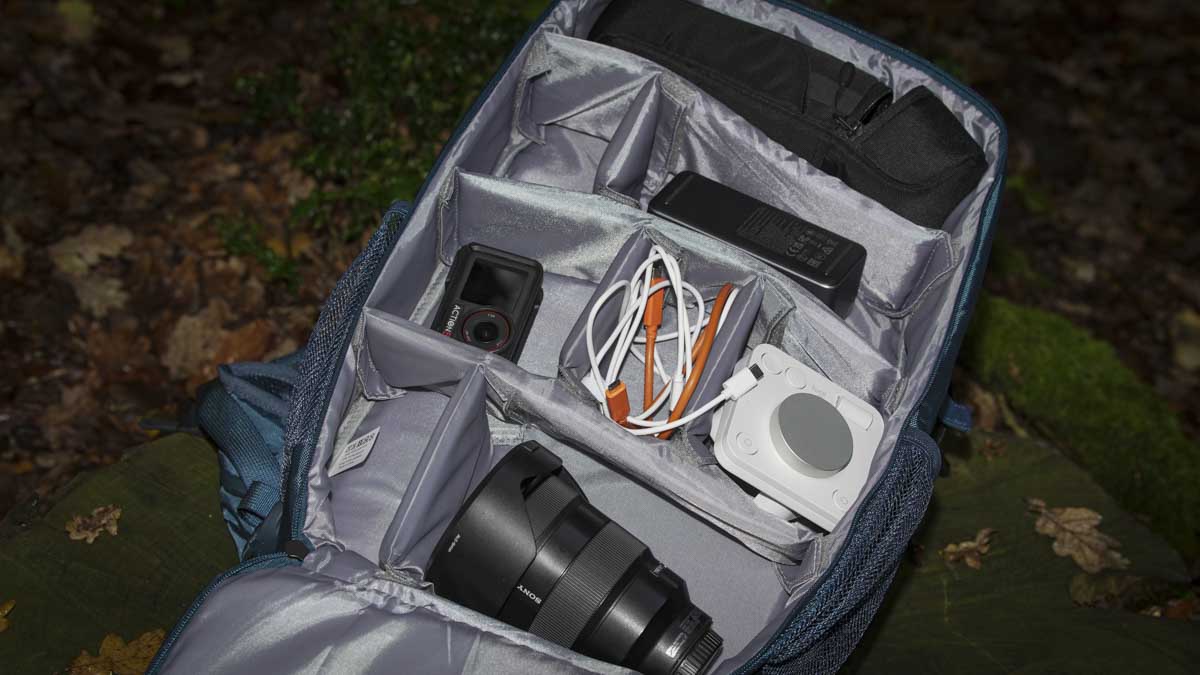
The answer to that is actually quickly revealed. During lunch, my GoPro, phone, a couple of SmallRig Sony-type batteries, and the laptop all needed a top-up. The Handsfree was with me because it had just arrived, and I was testing the DJI Air 3S and hadn’t had time to charge the batteries before heading out. So, it made sense to grab this and see how it would do. What was instantly apparent was that I had everything plugged in at once, and the 300W maximum output still had plenty of headroom. Most power banks are well below the Wh rating of the Handsfree, and the largest capacity power bank I have is 48,000mAh, which roughly equates to 177Wh. It also has a maximum output of 300W, so while both are able to charge at the same speed, the largest power bank only has half the capacity.
Then there’s the fact that the power bank only supports DC and not AC power. So, while any USB-chargeable device is fine, camera batteries and lighting that require AC power can’t be charged with the power bank. However, with the Handsfree 1, you just plug in everything, and it works—nice and easy.
There are, of course, two parts to the system, or actually three if you include the optional solar panel. The kit that I’m reviewing features just the battery and backpack, and as the backpack is the main thing you see when opening the kit, I’ll start with that.
My first thoughts about the backpack were more about the design, which all seemed decent enough and surprisingly comfortable once fully loaded. An instant issue was the depth of the camera section, which was just a little shallower than I would have liked. Still, removing the Sony lens and flat-packing the camera did the job, although it could be better. The rest of the kit settled in neatly with the flash, filters, and a few other accessories.
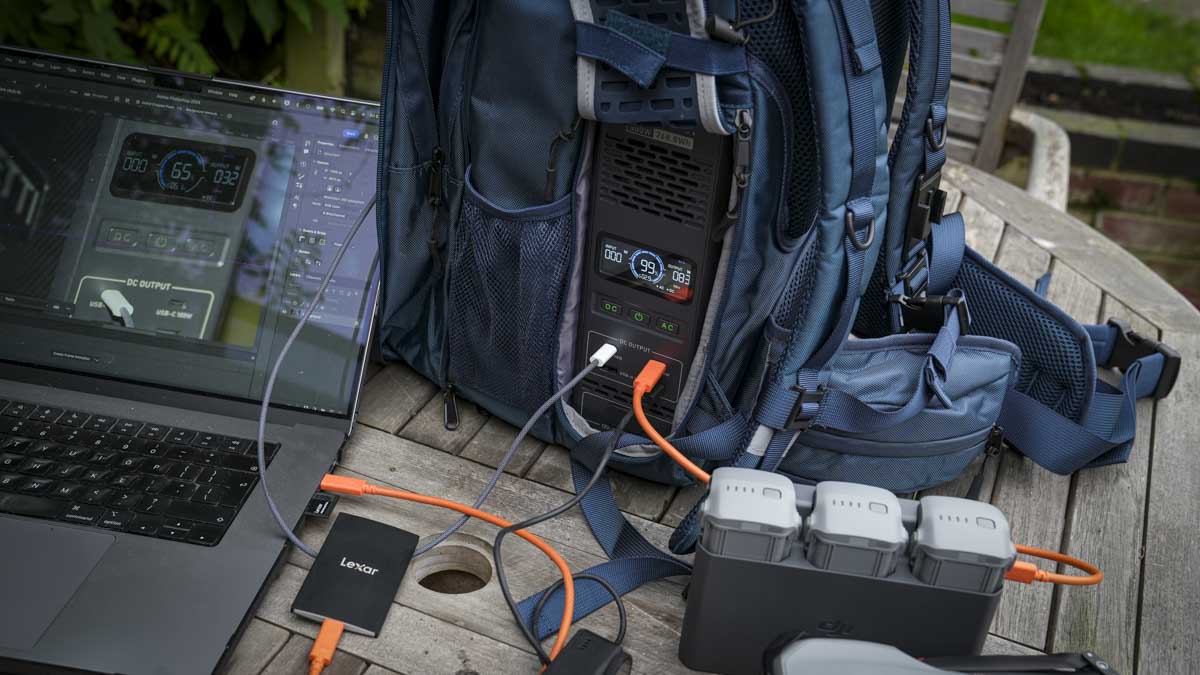
On the exterior, the bag is really well-designed, and it’s easy to slot everything you need into all the loops, pockets, and straps. BLUETTI has obviously thought hard about the design, and it’s definitely functional, although it’s more functional than stylish—this looks like a work utility bag rather than a stylish camera backpack.
On each side of the backpack are two large flaps that can be opened to give you access to the power station inside, essentially giving you fast access to the power when needed. The absolute ease of use really stands out, and despite the size and weight, when it’s in the backpack, the weight is well distributed, making it easy to carry. However, as the backpack fills with the kit, that load does become noticeable, so it’s great for lugging the kit to a location but not for carrying it fully loaded all day.
In use, the power station works incredibly well, especially with the app able to monitor the capacity and output of the unit. Access to the ports through the bag’s side doors works well, and when stopping for lunch, the bag sat at the end of the table with everyone’s phones, laptops, and chargers connected to get a boost of power. By the end of lunch, the battery had rapidly gone from full to empty, but considering it had topped up four NP-FZ100 batteries, the DJI Air 3S, several phones, and the MacBook Pro all at the same time, that was considerably more than most power banks could handle.
